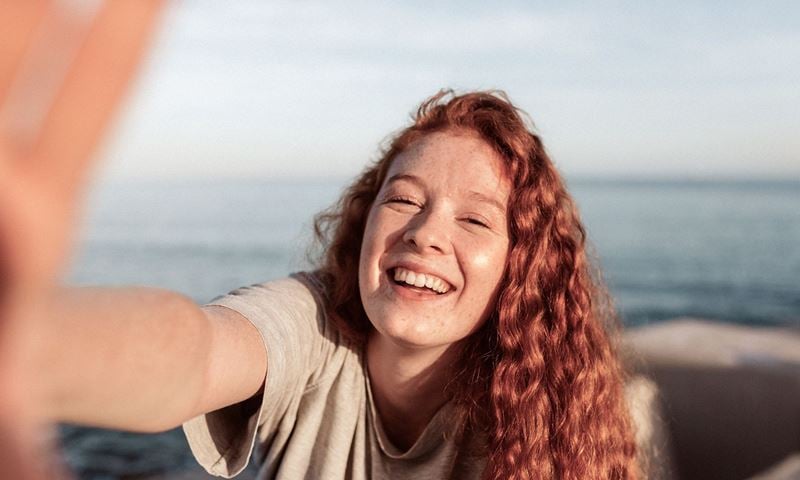We all know the slogan ‘Slip, Slop and Slap’ in relation to sun protection. Recent additions to the classic tune include Seek (shade or shelter) and Slide (on some glasses to block out the sun).
Sun exposure can result in damage to the eye. Your optometrist will recommend sun protection for your visual comfort and to protect your eyes against the development of pterygium, dry eye, cataracts and macular degeneration.
GMHBA Eye Care Optometrist Alannah Greig addresses some of the common queries we hear when it comes to the importance of sun protection for sight and what your options are in choosing a combination of frames and lenses to suit your lifestyle and protection needs.
 How do sunglasses protect my eyes?
How do sunglasses protect my eyes?
Sunglasses are simply a frame with a tinted lens which has been dyed to reduce reflection and glare. With sunglasses we need to consider how dark the tint is, the colour, and what we will use them for. The aim is to provide a tint that is comfortable for the eyes and provides an adequate level of protection.
Sunglasses are no longer purely a fashion item for those with good vision. The days of simply tinting a pair of lenses in a standard spectacle frame have passed. With improved lens technology most prescriptions can be made to suit your sunglass frame.
In choosing the right frame, your optometrist and optical dispenser will help you consider side coverage, whether light comes around the edges of the frames, to ensure we find the right pair to suit you and your lifestyle.
There is a science behind the colours used for the tints, combined with an element of personal preference. Typical colours for sunglasses are grey, green or brown;
| Grey Tint | Grey tints are a more common choice as they filter all wavelengths evenly, providing the truest colour of a scene. |
| Green Tint | Improves contrast and good for ‘daylight driving’ and golf. This tint has a natural look and is commonly used for Ray-Ban’s traditional lens colour. Green/grey coloured lenses are also recommended for salt water fishing. |
| Brown Tint | Brown tints are recommended for fresh water fishing (yes there is a difference!), as brown is often better in lower light conditions and will highlight more red. |
| Yellow Tint | Yellow tints are great for skiing and other snow sports. |
Polarisation: What are polarised sunglasses?
Polarised lenses block reflected glare, which is any light that bounces off another surface.
We used to think polarisation was only important for water and snow sports, but in the modern world there are many surfaces that reflect light. The wet road, glass shop fronts and white or light-coloured cars can all reflect annoying light back at us. Polarisation allows clearer, more comfortable vision when glare is around.
People who have undergone cataract surgery are particularly sensitive to glare, so polarised sunglasses can help with this.
What are transition (photochromatic) lenses?
Transitions, or photochromatic, lenses darken on exposure to ultra-violet (UV) light with the aid of a chemical that is embedded into the lens. At their full effect, photochromatic lenses darken to 80 per cent – a typical sunglass level.
Due to the UV filters on windshields of modern cars, photochromatic lenses do not work to full effect in cars. In this instance a standard sunglass tint is sometimes preferred for glare protection when driving. Some types of photochromatic lenses are ‘extra-active’, making them darker at the darkest, and more tint remaining when at minimum (useful for driving and summer months).
When indoors, photochromatic lenses are not completely clear, keeping about 15 per cent tint. This residual tint is almost invisible. However, a common concern from patients is that the lenses remain dark indoors for too long, or don’t change rapidly enough when going outside.
As the photochromatic lenses age, and gain experience at changing, they react (transition) more quickly. Your optometrist will help you when considering the convenience versus the compromise of transitions and whether these would best suit your lifestyle.
If I don’t wear sunglasses outdoors are my eyes still protected from UV?
If you wear prescription lenses, these can provide a limited amount of protection against UV. However, we would always recommend the additional benefits of sunglasses, transitions or polarised for specific sun protection.
Now that you are equipped with the sun protection options available to you, have a conversation with a GMHBA Eye Care optometrist about the options that best suit your lifestyle and needs whilst providing your eyes with the maximum amount of protection. Coming into the summer months it’s perfect timing to see how your optometrist can help you find the right pair.




